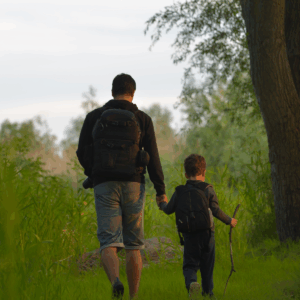I met her on a rainy Thursday, the kind of day that makes you want soup and an early night.
She laughed when I asked how married life in France was treating her. “Lovely,” she said, “but dinner at 9 p.m. felt like midnight.”
That one sentence carried a whole life inside it. A childhood of early dinners and noisy kitchens. A new marriage where the table fills later, the conversation lingers longer, and the dishwasher hums close to midnight.
No drama. Just a rhythm shift you feel in your bones.
I’ve seen this with cross-culture couples before, and not just with food. The clock itself seems to change shape. If you’ve ever tried to merge two calendars, two cuisines, and two definitions of “soon,” you know what I mean.
Here’s what I learned listening to her story—and what might help if you’re weaving two daily rhythms into one home.
The first shock is the clock
She grew up eating by 7:30. “We’d be clearing plates during the cricket highlights,” she said.
In her husband’s Paris apartment, dinner rarely started before 8:30. Friends arrived closer to nine. “My stomach kept looking at me like, are you serious?”
The problem wasn’t the hour on the microwave. It was everything stacked behind it: when the emails stop, when you start chopping onions, when you call your mother, when you put on comfortable socks. Shift one piece and the others slide.
I asked what made it hardest. “It’s that my body thought the day should be over,” she said. “At 9 p.m. back home, I’m in pyjamas. Here, it’s time to plate the courgettes.”
Her words reminded me how quickly our bodies learn a place. We’re not only moving between cultures. We’re asking our circadian rhythms to change countries too.
Related Stories from The Artful Parent
Food didn’t just shift—it stretched
In her family, dinner was a destination: one plate, everyone together, then dishes. In her husband’s world, dinner was a journey. “There’s the apéro, the tiny things to nibble, then a salad, then cheese, then something sweet. It’s lovely,” she said, “but I kept losing the plot by 10.”
So they experimented.
On weeknights, they pared it back. One main, a simple green, fruit. On weekends, they stretched. “I can do the long, layered version if I know it’s coming,” she said. “But not on a Tuesday after a day of Zoom calls.”
I’ve mentioned this in a previous post, but it fits here: rituals should serve the people at the table, not the other way around.
Keep the spirit. Adjust the steps.
The language of time needed translation
She smiled at this one. “When my husband says ‘on time,’ he means a few minutes early,” she told me. “When I say ‘on time,’ I mean right on the dot. We were both punctual—just by different clocks.”
- 7 brutal signs you’re the “poor friend” in your social circle even if no one says it out loud - Global English Editing
- 8 forgotten songs from the 70s that make every Boomer feel 12 again - Global English Editing
- 8 proven parenting strategies that raise mentally strong, resilient, and successful kids, according to child psychologists - Global English Editing
They started to get specific. “Let’s eat at eight” became “we’ll sit down at 8:15.” “I’ll be home early” became “I’ll be home by 6:30 and can start the rice.” Those tiny clarifiers saved them from a hundred small irritations.
I use a simple test when couples tell me time is tense: if you swapped your watch with theirs, would the plan still work? If the answer is no, you need new words.
Sundays changed shape
In the town where she grew up, Sundays could be market mornings and busy evenings. In their French neighborhood, Sundays were quiet.
Shops closed. Streets slow.
“At first it felt like the world had been turned down,” she said. “Then I realized it was an invitation.”
They made a Sunday palette they both liked: late breakfast, a walk if the sky cooperated, calls to family, a big pot of something. “I stopped expecting errands,” she said. “I started expecting stillness.”
There’s a calm that comes when you stop fighting the character of a day. You can borrow that calm even if you don’t live in France.
Declare your own closed hours. Let the inbox wait.
Lunch became the anchor
Back home, lunch was quick. Here, it mattered. Even on a busy day, there was a moment to sit, to have something warm, to name the afternoon before diving in.
“Lunch saved me,” she said. “If dinner is late, lunch can be loved.”
They built a small repertoire: lentil soup, omelettes with herbs, yesterday’s roasted vegetables tucked into a baguette. Nothing fancy. Just food that respects the middle of the day.
I tried a version at home.
A simple midday plate instead of scavenging snacks. It softened the edges of the afternoon. Funny how a meal can fix your calendar.
Sleeping shifted too
“Dinner moved, sleep moved,” she said. “I wasn’t tired at bedtime, and I woke up heavy.”
They found a bridge. A short evening walk after dinner. Screens off earlier. She kept her morning tea, even if breakfast shifted. “My tea is non-negotiable,” she said. “It’s how I meet the day.”
Our bodies like anchors. Keep one or two and you can change the rest with less protest. Maybe for you it’s prayer, or a stretch, or the sound of the kettle at seven.
Keep it, even when the rest of the house speaks another time.
They made a “two-clock” week
This was my favorite idea. They gave different days different loyalties.
Monday to Thursday leaned her way: earlier dinners, simpler evenings, lights out sooner. Friday and Saturday leaned his: the longer table, friends popping in, dessert that requires a plate and not just a spoon.
“It felt unfair to be half-compromising every night,” she said. “So we made whole compromises, just on different days.”
If you’re blending homes, try this. Swap every other weekend if you need to.
Clarity beats constant negotiation.
They built a shared invitation
Early on, she would sit at the table, yawning politely while conversation went wide and late. He would eat rushed, impatient for the long talk he loved. Both thought they were being generous. Both felt a little lonely.
The fix wasn’t a fight. It was an invitation.
“Will you teach me how to host your way?” she asked him. He showed her how he planned the flow, how he chose wines, how he made sure quieter friends got space. “Will you teach me how to do Tuesdays your way?” he asked her. She showed him how she preps vegetables before work, how she warms the plates so food stays hot, how she gets the dishes done before the drowsiness wins.
When we ask to be taught, we honor culture without abandoning ourselves.
Tiny habits did the heavy lifting
They set a snack ritual at 6:30 so she wasn’t starving by nine. They filled the freezer with two “rescue meals” for sudden long evenings.
She learned to love the apéro by making her own: a small bowl of toasted channa, a few olives, a carrot sliced on the diagonal, and a glass of sparkling water with a lime wedge.
He learned the joy of a pressure cooker. “There’s a dal on the table in 20 minutes,” he said, proud as a new convert. He also learned that rice on a French plate is not a failure of Frenchness. It’s a marriage.
It reminded me of a line from Rudá Iandê’s new book, ‘Laughing in the Face of Chaos‘: “Real change is built on small, honest choices repeated every day.”
That’s exactly what I saw in their kitchen—nothing flashy, just tiny levers pulled consistently until the whole rhythm shifted.
Little things carry most of the weight. Do enough of them and the big things look after themselves.
They protected family calls
Time zones complicate love.
Her mother called in the evening Indian time, which landed around late afternoon where they lived. “I’d be halfway through cooking,” she said, “and the phone would dance.”
They chose two call windows each week where everything else paused. He poured a glass and sat with her for the start. “Hearing him greet my parents in his careful Hindi softened something in me,” she said. “It made the distance shorter.”
If you’re far from family, build those windows into the house schedule. A call isn’t an interruption when it’s woven into the plan.
What didn’t change (and didn’t need to)
She kept breakfast the way she liked it: something warm, something spiced, something that tasted like home.
He kept his cafe crème and tartine, sometimes on the other side of the table, sometimes an hour later.
They stopped seeing it as a failure to synchronize and started seeing it as two ways of honoring the morning.
You don’t have to agree about everything to agree about us. You just have to decide which differences are culture and which are friction.
Culture enriches. Friction needs oil.
What I took from her story
I’ve sat at enough tables to know this: the clock is a character in every love story. It can be a bully, a romantic, a comedian, or a faithful friend. You get some say in the role it plays.
Ask each other, “When does your day feel like it starts?” and “When does it feel like it ends?” Ask what foods make the hours go easier. Ask where you still want your childhood to sit down in your adult kitchen. Then write a small schedule that respects the answers.
As we finished, I asked her if 9 p.m. still felt like midnight. She grinned. “Sometimes,” she said. “But now the table feels like ours, however late it is.”
And that might be the deeper shift. Not earlier or later. Ours.
Before you go, here’s my question for you:
If your home speaks two time languages, what’s one small habit you could add this week that helps both of you hear the same song by bedtime?










